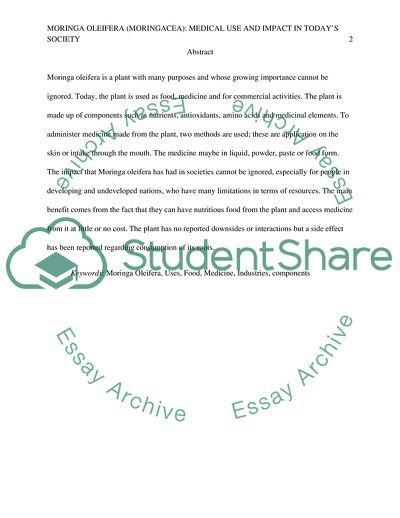Cite this document
(The Impact of Moringa Oleifera Coursework Example | Topics and Well Written Essays - 2000 words, n.d.)
The Impact of Moringa Oleifera Coursework Example | Topics and Well Written Essays - 2000 words. https://studentshare.org/biology/1860476-moringa-oleifera-moringacea-medical-use-and-impact-in-today-sociaty
The Impact of Moringa Oleifera Coursework Example | Topics and Well Written Essays - 2000 words. https://studentshare.org/biology/1860476-moringa-oleifera-moringacea-medical-use-and-impact-in-today-sociaty
(The Impact of Moringa Oleifera Coursework Example | Topics and Well Written Essays - 2000 Words)
The Impact of Moringa Oleifera Coursework Example | Topics and Well Written Essays - 2000 Words. https://studentshare.org/biology/1860476-moringa-oleifera-moringacea-medical-use-and-impact-in-today-sociaty.
The Impact of Moringa Oleifera Coursework Example | Topics and Well Written Essays - 2000 Words. https://studentshare.org/biology/1860476-moringa-oleifera-moringacea-medical-use-and-impact-in-today-sociaty.
“The Impact of Moringa Oleifera Coursework Example | Topics and Well Written Essays - 2000 Words”. https://studentshare.org/biology/1860476-moringa-oleifera-moringacea-medical-use-and-impact-in-today-sociaty.


